Low conversion rates are the bane of paid media campaigns. The simple math dictates that if you pay for nonperforming media, your ROI will be poor, and profit elusive.
The targeting we rely on as PPC account managers is the driving force behind surgical efforts to show advertising to consumers (or business prospects) with high purchase intent. Sometimes, we make judgment calls to go “higher funnel” or to reach consumers at the “awareness stage.” But our marketing mix as a whole relies on normal to above-average conversion rates.
Sometimes, even with an account that generally performs well, conversion rates begin to slide. Or part of an account stops performing the way it once did. A classic example here is how fluctuations in the quality of Google Display Network (GDN) placements over the years might have led to erratic performance, even for remarketing.
If, like me, you’ve been in the industry for more than a few years, you’ve probably heard most every knee-jerk diagnosis of poor conversion rates:
- “Cart abandonment is high. There must be something wrong at stage 3 causing people to abandon.”
- “Conversion is poor in mobile. It’s harder to read the descriptions and navigation is harder and so people give up in frustration.”
- But, “The website developers (they only gave us brief comments as we would have to re-engage them on retainer for them to do any more work) say the site speed suggestions are pointless and their UX test shows it’s pretty fast and a typical user has no trouble in mobile.”
- “Are we using the right landing pages?”
- “We need landing page optimization. Do you guys do that?”
- But, “No, our IT person won’t let you install that tool on the page and says if there is any test running it’s going to be done in house and not by the agency. We’re working on a timetable for more testing.” (Now what?)
- “This listicle by someone at Hubspot says these are five ways to improve conversion rates and/or relevance. One of the items seems to suggest writing a lot of content on a lot of different pages. Another suggests that you should avoid too much content.” (Now what?)
- “We feel like the product has a longer consideration cycle so people are almost buying, but never quite pull the trigger due to the expensive price point.” (Here, solutions almost certainly involve patience, working multiple channels including organic, content, email, PR, etc. expertly, and working hard to position the business and gain a reputation).
- “They’re tire-kicking but going with the familiar or better-packaged competitor.” (Could naming and positioning indeed be important?)
- And the list goes on.
Given the friction inherent in “managing up” and collaborating in an agency-client setting when the issue is user experience and conversion rate issues, to say nothing of positioning and reputation, it’s tempting in some cases to circle the wagons and attempt to mitigate some of the problems with targeting-level fixes instead of more fundamental remedies. So let’s try to do that here, based on some recent experiences.
The Case of the Large Ecommerce Store
Recently, a large ecommerce store began to see conversion rate declines across the board, gradually getting worse month to month. This is in the context of a pretty successful past year, in keeping with many ecommerce businesses. Supply chain issues have thrown a few wrenches into this success, unfortunately.
We do know that seasonality plays a key role in this company’s conversion rates. We always marvel at why seasonal demand is reflected so much in conversion rates, rather than just search volumes. But that’s the consumer behavior. Thus, as with a few of our clients, conversion rates won’t rebound substantially until October. (Checks watch…) If we’re hoping for the high season to save the day, October is a long way off. And if we’re hoping for a relaunch of the dated website to save the day… October is a long way off. It’s incumbent on us to look alive from now until then, or we won’t have a client in October. That’s regardless of factors outside of our control.
It doesn’t hurt that out-of-stock issues are unpredictable across a very large catalog. The supply chain should be fine by October! (Checks watch again…)
Of course, we can tighten up various bids (keywords, etc.), or just tighten down device-level bid adjustments, or let the Smart Bidding bots try to figure it all out (which they won’t, entirely – mixed results at best). And wait for October. But that costs us too much volume, and doesn’t address underlying problems.
In terms of conversion rate issues across the board in this account, we should always look more closely at any potential shortcomings in our targeting. Recall my example of changes in the underlying quality of placements in the Google Display Network? It’s important to understand that the targeting details in a PPC platform can be shifting sands – changes in the true targeting take place in layers underneath your surface assumptions and visible settings.
We were able to shore up some of the problems (as we often have) account-wide by revisiting keyword match types, and continuing to address the wildly shifting quality of query mapping via the addition (as always) of scads of negative keywords.
Google Shopping was a particular culprit, however. Why? It should be a huge driver in this account, as it is for most ecommerce accounts.
The most obvious problem was, as for other campaigns, a continuation of bad query mapping. We remedied this in part through the addition of negative keywords.
There’s a problem, though. Unlike fluctuating query mapping driven by keyword match types, Google Shopping ad units are chosen to be displayed based on how Google’s machine learning reacts to user responses to your ads at scale, but in an environment that allows us scope for inputting more relevance cues than just keywords and bid adjustments – namely, the many-faceted feed in Google Merchant Center (GMC).
A particularly unoptimized feed will result in lower impression volumes for most ecommerce advertisers. Achieving higher volumes is possible with higher bids, but this triggers a large number of poor matches, resulting in low conversion rates. Your trusty “I’ll fix what I can on my end” PPC professional can work through the most obvious, higher-volume poor query matches and add negative keywords to deal with this. But that’s as far as it goes. The Search Terms Report will remain riddled with a vast number of lower-volume nonconverting queries. Until the feed is optimized, this vital aspect of the company’s operations will continue to underperform.
And how is the feed optimized? More advanced, dedicated solutions seem to be required. It’s not a simple manual task, nor one that 98% of company IT departments are going to be able to solve themselves.
October can’t come fast enough.
Read Part 46: Low-Revenue PPC Conversions in Freemium B2B Models